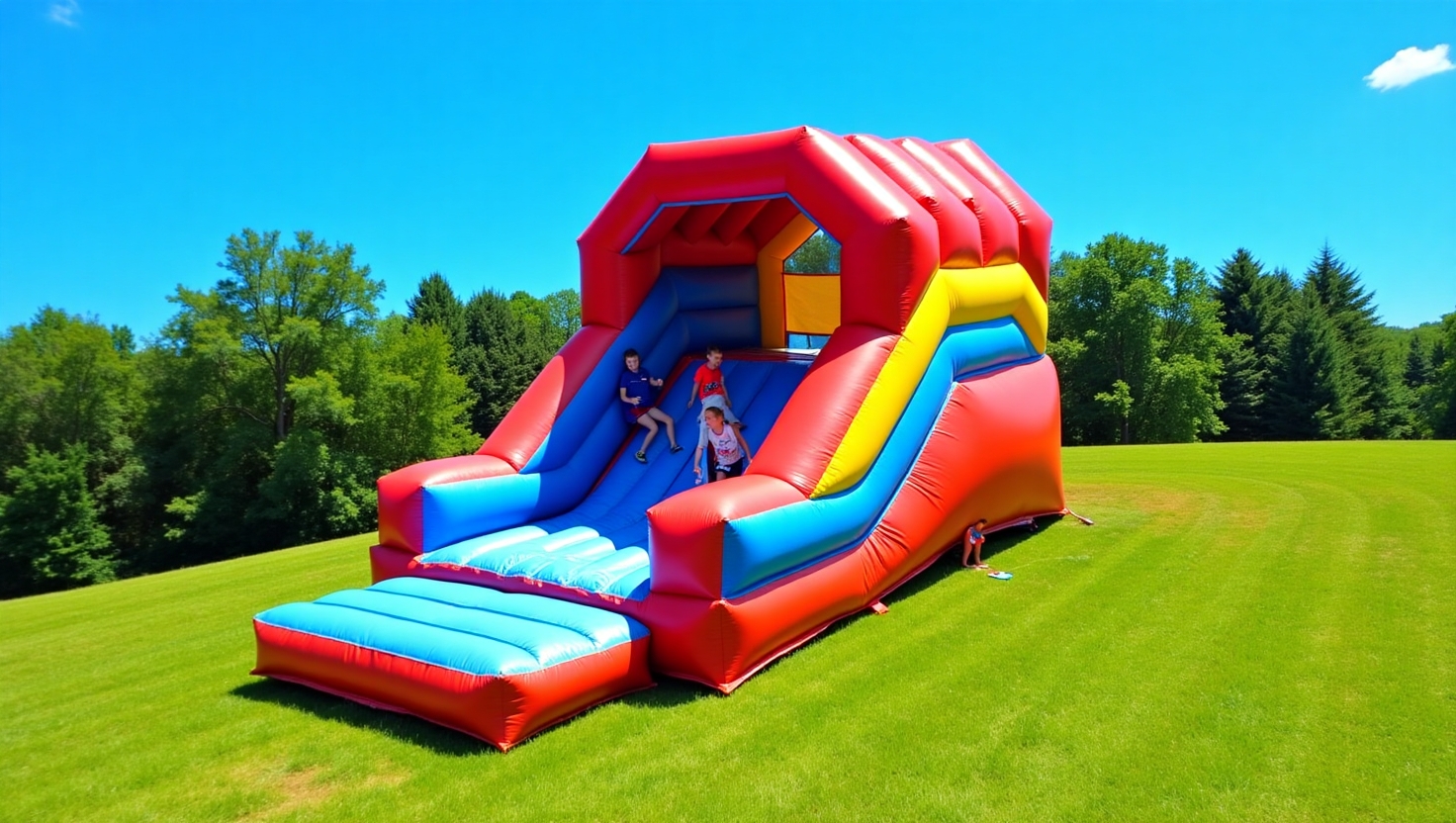
All you want to know about us
Click here to share this article

Bouncy castles provide endless fun for children and even adults, but one crucial consideration before setting one up is the terrain. While a flat surface is ideal, many wonder if it is possible to place a bouncy castle on a hill. In this article, we will explore the challenges, risks, and best practices for setting up an inflatable on uneven or sloped ground.

Why Level Ground Is Essential for a Bouncy Castle
A bouncy castle requires a stable and level surface to ensure the safety of its users. Here are a few reasons why flat ground is preferred:
Even Weight Distribution – Bouncy castles rely on air pressure to maintain their shape. Uneven ground can cause stress on certain areas, leading to instability.
Safety of Users – A sloped surface increases the risk of falls and injuries due to improper balance.
Proper Anchoring – Pegs and weights used to secure the inflatable may not hold effectively on an incline.
Airflow and Structural Integrity – A tilt can obstruct airflow, affecting how the inflatable stays upright.

Challenges of Placing a Bouncy Castle on a Hill
Setting up an inflatable on a slope introduces several risks, including:
1. Increased Risk of Tipping Over
When placed on an incline, a bouncy castle may lean toward the downhill side, increasing the likelihood of tipping. Children bouncing inside may shift the weight further, making it even more dangerous.
2. Uneven Bouncing Surface
A sloped surface affects how people bounce, causing an unnatural movement that can lead to falls or injuries. The higher side will have more tension, while the lower side may feel less inflated.
3. Difficulty in Anchoring the Structure
Bouncy castles must be firmly secured to prevent movement. On a hill, traditional ground stakes might not be enough, as they can loosen over time due to the angle.
4. Wind Hazards
A hilltop location exposes the inflatable to stronger winds, which can make it more vulnerable to being lifted or destabilized.
5. Unbalanced Weight Distribution
When users gather on one side of the inflatable, weight distribution becomes uneven. This imbalance can strain the material and affect the overall stability of the structure.

Best Practices for Using a Bouncy Castle on a Slope
While placing a bouncy castle on a hill is not recommended, some adjustments can help mitigate risks if no flat surface is available.
1. Choose the Least Sloped Area
If a flat area is unavailable, opt for the most level portion of the hill. The gentler the slope, the safer the setup.
2. Use Adjustable Support Platforms
Creating a leveled base with wooden planks or a temporary support system can help stabilize the inflatable.
3. Secure the Inflatable with Extra Anchors
Use heavy-duty ground stakes combined with sandbags or water weights to reinforce the structure. Drive stakes deep into the ground and position them strategically to prevent shifting.
4. Position the Entrance on the Lower Side
Setting the entrance on the downhill side minimizes the risk of falls when children enter and exit.
5. Implement Additional Safety Measures
Use Safety Mats around the castle to provide cushioning in case of falls.
Limit the Number of Users to prevent excessive strain on the inflatable.
Monitor Weather Conditions, as wind can make the situation more hazardous.

Alternative Solutions for Sloped Terrains
If your location has no completely flat areas, consider alternative options:
1. Renting a Smaller Bouncy Castle
A smaller inflatable has less surface area, making it slightly easier to set up safely on an incline.
2. Using an Indoor or Hard Surface Location
Garages, gymnasiums, or concrete patios provide stable ground that can accommodate an inflatable with proper padding.
3. Installing a Temporary Leveling Platform
For long-term use, building a wooden or synthetic platform can create a stable base for your inflatable.
4. Hiring Professional Setup Services
If unsure about safety, consult bouncy castle rental professionals who can assess and prepare the area for proper installation.

Conclusion
While a bouncy castle should ideally be placed on a flat surface, there are ways to adapt to a slightly sloped terrain with extra precautions. However, if the incline is too steep, it is best to find an alternative location or use additional leveling measures. Safety should always be the top priority when setting up a bouncy castle, ensuring a fun and injury-free experience for all users.
undefined
undefined
undefined
undefined
undefined
undefined
undefined
undefined
undefined
undefined
By: